#Source: Chrono Trigger
Explore tagged Tumblr posts
Text
Get out of here with that nuclear shit. That's just fire with a PhD.
Yahtzee Croshaw
#yahtzee croshaw#the escapist#source: Zero Punctuation#source: Chrono Trigger (Zero Punctuation)#out of context youtube
13 notes
·
View notes
Text
WIP excerpt behind the cut; “Tim’s free cloning lab ( and all that that implies )”. (( chrono || non-chrono ))
“Oh my god!” Steph wheezes, clapping a hand on his shoulder as she doubles over cackling. “Red, I refuse to be godmother but I need to be your lab assistant. Please, please let me be your lab assistant.”
“I don’t trust you to follow OSHA protocols to my standards,” Tim retorts darkly, trying not to die of mortification as Luthor just raises an eyebrow at them.
Honestly, he has no idea why Luthor’s sourcing someone else to make him–grandchildren, apparently. He can’t imagine Luthor trusting anyone else’s work, for one, and also Kon would literally adore any fucking kid anyone ever presented him with no matter who or where they came from. Though admittedly, dormant mind control triggers would be an obvious concern in anyone Luthor personally made, so . . .
Tim is going to need to set up so many security systems before he does this.
. . . not that he is going to do this, because he and Kon are not in fact dating and therefore definitely have not discussed whether or not Kon even personally wants kids or when he might want them or anything like that.
Which–Tim is both completely positive that Kon does personally want kids and equally positive that Kon thinks he can’t ever have them, but that is not the point here.
#timkon#tim drake#lex luthor#stephanie brown#dc robin#dc spoiler#dc red robin#wip: tim's free cloning lab
177 notes
·
View notes
Text
I've got a pet theory for the ongoing story in FFXIV.
There are lots of little bits and pieces that alone might just be cute nods, but together make me think that FFXIV is and has been laying the groundwork for an eventual Chrono Trigger-inspired expansion or at least a more significant plot beat.
MAJOR SPOILERS FOR FFXIV THROUGH DAWNTRAIL
One of the key elements is the infamous "keening from the earth" mentioned in relation to the Final Days by one of Emet-Selch's Amaurotine simulacrum Ancients. I say "infamous" because come Endwalker, it felt like a dropped detail -- Meteion didn't really fit that description, and nothing we're told about how those Final Days played out really brings it up again.
But I think another plot element is being hinted at in other places that could very well provide us with the source of that "keening".
It's a little odd that we got another Ronka-esque dungeon at the end of Tender Valley this expac, complete with its own serpent! The Yok Huy simply.. finding the ruins suggests that this ruin and the Ronkan ruins on the first share a common origin -- meaning their inspiration probably comes from before the sundering -- perhaps even from before the Ancients themselves, considering its architecture doesn't really share any similarities with structures we know the Ancients built. That period is a blind spot for everyone.
We learned about something else that existed prior to the Ancients in Endwalker's patches -- The Heart of Sabik, AKA the Black Auracite. It came from somewhere not of Etheirys -- somewhere else in the Sea of Stars -- from, or at least from the same place as, the being known as Ultima.
It's interesting, then, that when Pallas Athena manifests, her arena / realm is not only wreathed with the eye motif from the previous fight with Athena, but also with.. what seems to be the body of an unimaginably large serpent.
To rephrase the idea here, through P12S, the concept of the Serpent is connected both to the Ancients -- beings who lived and worked in places like Elpis, which shares more than a few similarities with the Kingdom of Zeal -- and with a dread being that hails from outer space.
That's what I think is "keening". A great serpent that, long before the disaster of the sundering or even before the Ancients' civilization was the dominant one on the star, burrowed its way deep beneath the crust of the planet.
That's a thought, though: what about the sundering? If this serpent existed beforehand, it would be in a similar state to the one we ultimately find Zodiark in, right? Well, before Dawntrail, we know that the star's been rejoined to its reflections seven times, meaning it's 8/14ths of the way to being "whole" again. And now in Dawntrail, we have Heritage Found, a partial "dimensional fusion" between a shard and the Source.
If this counts as a rejoining without a corresponding calamity, then perhaps in the coming expansions, Preservation will use Dimensional Fusion in their conflict with the WoL and, inadvertently, rejoin the serpent as well. Zero and Golbez's efforts to rebuild the 13th, in combination with Dimensional Fusion, could mean that a total (partial) rejoining actually becomes possible!
So, if you've played Chrono Trigger and you're convinced by all of this, why don't I just come out and call the serpent Lavos?
Well, I'm not sure if SE's going to be quite that explicit.
After all, Krile's parents were named Alayla and Robor, not Ayla and Robo. They have the good sense to obfuscate it at least a little.
#ffxiv#final fantasy#final fantasy xiv#ff14#final fantasy 14#theory#spoilers#dawntrail#chrono trigger
155 notes
·
View notes
Text
fvn littl3 pack id3a! i vz3d ovr pazt lif3 oracl3 cardz to mak3 a pack and it finally h3lp3d m3 figvr3 ovt who i am ... !!
(Translation: Fun little pack idea! I used our past life oracle cards to make a pack and I finally figured out who I am!)
♡ ̆̈Alter pack from the oracle ༉‧₊˚.
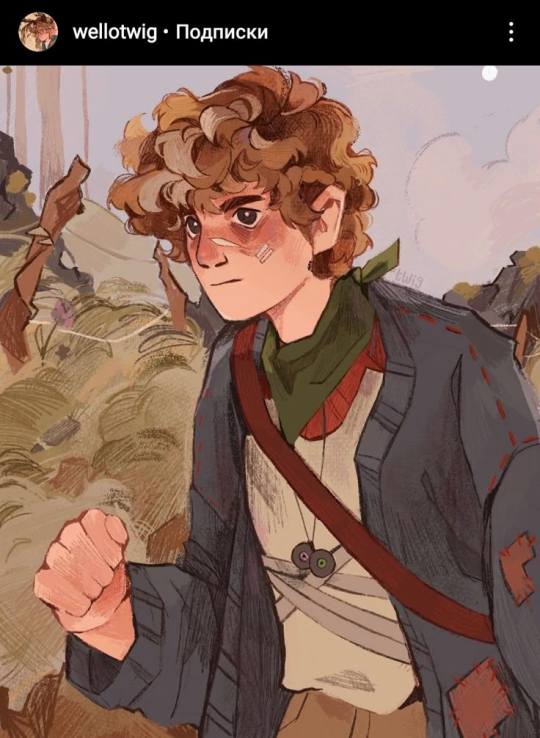
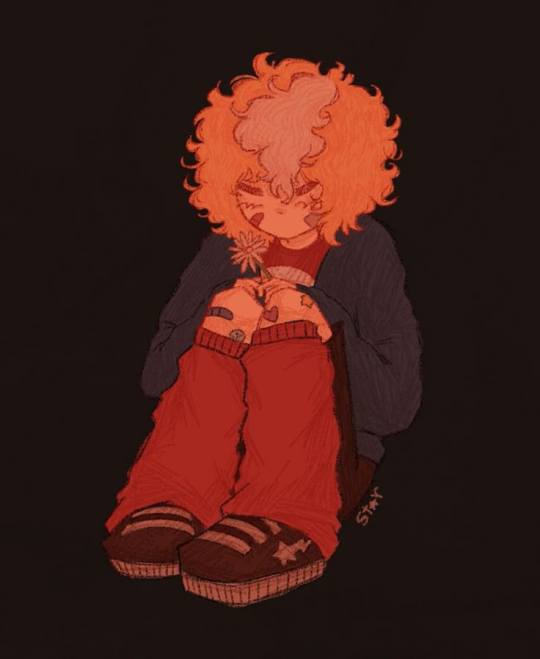

Names 𓂃⋆.˚ Mori, Tess, Theseus, Vivi, Sox, Sol, Poppy, Lilac, Dawn, Dusk, Sarah, Friend, Wool, Bask, Raccoon, Sovi, Mebby, Vero, Somni, ,ia, Lia, Sora, Whimsy, Fae, Flaira, Vid, Keto, Klepto, Calo, Vega, Sev, Coco, Bibli, Purr, Lamb, Fawn, Stripe, Balla, Visco, Biela, Heart, Rot, Core, Blade, Villa, Cosco, Epson, Limerence, Daemon, Angel, Wing, Claw, Soren, Bella, Vella, Rema, Rem, Gigi, Helena, Arson, Bug, Pup, Mutt, Doggie, Arf, Woof, Paw, Pens, Fern, Cross
Nicknames 𓂃⋆.˚ Pup, So, Toms, Lamb, Bell, Tsk, Lila, Brry
Age 𓂃⋆.˚ 8-15 (Chrono 16)
Pronouns 𓂃⋆.˚ Straw/Straws, Berry/Berrys, Fluff/Fluffs, Purr/Purrs, Horn/Horns, Hate/Hates, Red/Reds, Whim/Whims, Sun/Suns, Star/Stars, Kid/Kids, Sad/Sads, Cove/Coves, Imp/Imps, Rac/Racs, Psy/Psys, Book/Books, He/Him, She/Her, They/Them, Ae/Aer, Si/Sir, Ve/Ver, Agro/Agros, Pin/Pins, Sin/Sins, Holy/Holys, Sim/Sims, Love/Loves, Pray/Prays, Prayer/Prayers, Shx/Hxr, Pop/Pops, Pip/Pips, Maroon/Maroons, Static/Statics, Hill/Hills, Rot/Rots, End/Ends, Fleur/Fleurs, Disk/Disks, Disc/Discs, Bil/Bils, Ki/Kir, Blu/Blus, Pine/Pines, Bin/Bins Gal/Gals, Simp/Simps, Hope/Hopes, Help/Helps, Bye/Byes, Leave/Leaves, Cry/Crys, Pet/Pets, Dark/Darks, Dog/Dogs, Cat/Cats, Skunk/Skunks, Chick/Chicks, Mind/Minds
Source 𓂃⋆.˚ Dsmp / Brainmade
Genders 𓂃⋆.˚ ClingyPupic, Fauxboy, Arificigirl
Sexuality 𓂃⋆.˚ Queer
Alter Roles𓂃⋆.˚ Reliux, Psychosis Holder, Sexual Pleaser, Punching Bag, Agorversio
Front Triggers 𓂃⋆.˚ Raccoons, Squirrels, SA, Being Gr00med, fluffs owner, ream, Wilbur, Philza, Angel X Demo tropes
Signoffs 𓂃⋆.˚ -🦝🐿️🦨❤️🩹, -🦨❤️🩹, -🦝, -🐿️, -🦨, -❤️🩹,


Songs 𓂃⋆.˚ Mellohi - C418, Little Space - SXYE, Body - Jordan Suaste, I Deserve To Bleed - Sushi Soucy, How To Never Stop Being Sad - Dandelion Hands, It's Only Sex - Car Seat Headrest
Aesthetic 𓂃⋆.˚
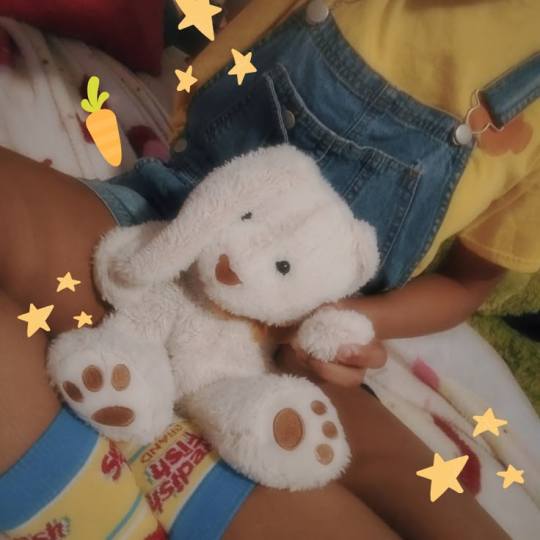


Personality𓂃⋆.˚ Cute and sad, Childish but very very sexually traumatized, clingy, misses his abusers, wants to be owned. Misses Dream & Wilbur, cats very insecure and whiny. Would do anything to be loved and taken care of.
Quirks 𓂃⋆.˚ Fidget-y, Whiny, Playing with plushies and making up stories.
Typing Quirk 𓂃⋆.˚ types like this: "th3 qvick brown fox jvmpz over th3 lazy dog ... "
Location Pref 𓂃⋆.˚ pins room! disk loves Kidcore, Softcore, Cutecore, Kawaii, Lol!/Sh0ta aesthetic rooms.
Paras 𓂃⋆.˚ 🧃, 🥚, ⌛, 🖤, 👥, 😖, 🦖, 🌼, 🔱, 🧵, 🩳, 🏓, 🍭, 🫀, 🩸, 🌑, 🔥, 🩹, 🧊, 👁, ⚠️, 🗡, 🔫, ⛓, 🎭, 🪢, 🔗, 👻, 📸, 🦈, 🫂, 🤮, 🚰, 🫁, 🤯, ♨️, 😶, 🛐, 🧹, ❌, 👙, 🌹🌟, 💭🐾, 🪽🤍, 🍂👦, 👨🍼, 🫐🌙, 🫠❤️, 🕸🖤, 💭🔪, 😘🔪, 💢🔪, 👏🪄, 🤝🧿, Letter codes here
Mental Conditions 𓂃⋆.˚ BPD, Maladaptive Daydreaming, Autism, ADHD, Moral Instability Syndrome, Unhealthy Relation Victim Disorder
CisIds 𓂃⋆.˚ Half-Blind, Blonde, AFAB, Scars, Victim, Fangs, Weed addict, Smoker,
TransIds 𓂃⋆.˚ Transmasc, transcaptorloved, , Trans Missing Eye, Transunhealoved, Transownerloved, Forcedgirl, Transserviceanimal, Transotherfictionparent, Transparaartist, Transvillain, Transcaptivelover, TransAgeSlider, Transinnocence, Trans Pet-Puppy,
MiscIds 𓂃⋆.˚ Trisharmed, Trisabused, Permaeyebags, Permainjured, PermaCringe, Permabranded, Permatattooed, Permascars
Memories 𓂃⋆.˚ Was gr00med by Dream & Wilbur, now is unhealthily attatched, has been considered a "pet" and has always been "owned". Kind of a sl*ve.
Speach 𓂃⋆.˚ Very loud when comfortable, very softspoken in general. Whiny and childish. Sometimes has a bit of a lisp and more childlike speach patterns.
Fronter Userbox(es) 𓂃⋆.˚







look at m3 vsing my own vz3rbox :p
(translation: look at me using my own userbox)

#☕oracle;#🪐planets;#bah blog#build a headmate#bah#build an alter#build a headspace#headmate pack#create a headmate#alter pack#alter packs#para safe#transid
24 notes
·
View notes
Text

Chrono Trigger, Forest Ruins. Source.
169 notes
·
View notes
Text












Early designs and concept art for characters from Chrono Trigger
The earliest art we have was made by artist Masato Kato, and looked really different than the latter designs by Akira Toriyama.
(Sources: 1, 2, 3)
31 notes
·
View notes
Text
Literally No One Asked: Examining Merits and Limitations of Three Translation Styles via Various Scripts of Chrono Trigger
As the last vestiges of winter vacation slip through our collective fingers (save the proverbial hands of those lucky ducks with another week left), I wanted to take the time to expound on a topic near and dear to my heart: the merits and limitations of three fundamentally different translation approaches, illustrated with three different approaches to a single work.
Under a cut for no doubt grievous length.
Also, a general reminder that this eassay is only about Japanese to English pop culture translations. It assumes certain basic value judgements we make about pop culture. "But this Spanish to Czech literary translation--" Is Jake Gyllenhaal gay? Sir, this is a Narnia blog.
Introduction
It seems like we always come back to the same question: do we as readers want literal or liberal translation in our Japanese to English media? Terrible question! It's too reductive; furthermore, both terms are too vague to be of any practical use. Let's throw it out and talk about something interesting for a change.
It is, perhaps, more telling to examine why we favor certain degrees of "literal" or "liberal" translation work and the relative merits and drawbacks of particular approaches. Certain readers will naturally favor different writing styles for different reasons, and it's likely a futile--to say nothing of boorish--exercise to insist someone change their preferences. However, there are some less subjective qualities we can examine which open the door to more fascinating discussions: In what areas are different approaches most effective? What are the limitations or common pitfalls of such approaches? What does favoring one approach over the other suggest about reader values? And so on.
While there are certain degrees of refinement and transformation in every approach to translation, the majority of styles fall into one of three broad categories:
Structurally untransformative. A text that "hugs" the Japanese and lives within the Japanese media cultural consciousness.
Inefficiently transformative. A text that lives within the English media cultural consciousness but achieves this result with strenuous, often sloppy, transformations. I may be a little harsher on this category because it's the one the majority of my work falls into.
Efficiently transformative. A text that lives within the English media cultural consciousness and is largely a clean, coherent work on its own. Typically (but not always) closely mirrors the source in style. Virtually always closely mirrors the source in spirit.
Due to licensing restrictions--to say nothing of the intense time commitment of translating a full work--we are very rarely blessed with alternate translations of games or books in the pop culture space. This limits our ability to effectively compare approaches, as a "liberally" translated apple bears a non-helpful resemblance "literally" translated orange. Are the visible differences a product of the translators' style, or is it a matter of the different species?
Fortunately, we are extraordinarily lucky to have three fundamentally unique translations of the game of Chrono Trigger with full scripts available at our fingertips. While it feels a tad gauche to put a magnifying glass on what are (mostly) the works of single individuals--particularly when one is a hobby project--all translations have been visible to the public for at least fifteen years. It is sufficient to say they are probably not reflective of any of the translators' current skillsets.
For those of us who haven't played the game twenty times in a probably autism-fueled stupor, let's discuss briefly the history of these translations.
Chrono Trigger was first released in English in 1995 with a translation by Ted Woolsey. I haven't deepdived any of Woolsey's work to a meaningful degree in recent years. My general impression is that his works tend to be "okay" translations with moments of brilliance (the names in Eng!CT are a shining example of this) and occasional complete misTLs. Some of his writing is pretty sloppy or ill-planned but generally acceptable within the game translation space of the 90s. He is reported to have completed the translation of this roughly 200,000 character script within a month. This is not impossible for a professional--we'll touch on this again later--but it is not pleasant. Given this severe time restriction, Woolsey's text is impressive but is a shining example of an inefficiently transformative translation (approach 2).
Fans, while largely appreciative of Woolsey's work, noted multiple minor mistranslations and examples of overzealous--and ineffective--transformation. A full retranslation project was launched in the early 2000s and spearheaded by an individual with the penname KWhazit. This project culminated in 2007 with a full patch of the game. KWhazit's work, in an effort to capture lost or obfuscated meaning in Woolsey's text, is reluctant to depart from the structure and makeup of the Japanese text. The text is largely free of errors, although I disagree with readings in minor instances. It serves as our example of structurally untransformative work (approach 1).
In 2009, with the release of Chrono Trigger on the DS, Square Enix assigned then in-house translator Tom Slattery to update the 1995 Woolsey translation and retranslate significant portions of the text. While some of Woolsey's core translation decisions are maintained--we'll talk more about this later--Slattery's work is generally a unique product. By my estimates, Slattery most likely had two months in which to complete the work and had less familiarity with the game than Woolsey in 1995. The unique challenges of this second official translation will be discussed later.
It would be remiss not to mention that Slattery's script was the first version of Chrono Trigger I ever played, and most of Slattery's other Square Enix translations (FF Tactics Advance, FFVI Advance, FFIV DS) are other childhood or adolescent favorites. Slattery was one of my translation idols when my interest in translation first began budding about a decade ago, so I'm well aware that I harbor some nostalgia for his writing. However, I hadn't looked at the Chrono Trigger DS script in any serious way for a good four or five years until just a few days ago. (Again...the caffeine and probably autism-fueled stupor. That was my idea of a vacation. In my defense, I had a grand old time holing up in a hotel room, reading scripts for hours, and grinning like a fool.) I was pleasantly surprised to find that the script holds up--to the best of my professional ability--even without the rose-tinted glasses of nostalgia.
Slattery's script is my favorite of the three, because I consider it the most effective and skilled conveyance of the Chrono Trigger spirit. It encapsulates the efficiently transformative approach (#3).
We'll examine why this elegant work is effective in its transformations, what transformations exist in Slattery's translation, and what drawbacks are associated with this approach via several case studies.
Prior to that, it would be helpful to discuss why each approach is fundamentally different.
What is Structural Transformation and Media Cultural Consciousness?
It is helpful at this point to remind the reader that I have no formal education in translation theory and am willfully making terms up as I go. Their significance does not extend past the boundaries of this essay.
That is, I do not use the phrase "structural transformation" purely to mean adjusting grammatical structures (the formal definition); at its heart, virtually all Japanese to English translation requires some degree of adjusting sentence structures for basic readability. "I topic dinner subject eat negative past feminine." is nonsense. At the same time, it's foolish to pretend that "I didn't eat dinner." is just as transformative as "Oh! Pish-posh. Who even eats dinner these days, darling?" (Important note: We are not attaching value judgements to degrees of transformation! I am not suggesting one line versus the other could ever possibly be more appropriate when completely devoid of context.)
To be able to differentiate works that might contain Ms. Didn't Eat vs Ms. Pish-Posh, we must consider what other works these translations are in conversation with. This is what I'm terming the language media cultural consciousness.
Works in the English media cultural consciousness mimic the style of works written originally in English--usually by native or strongly fluent writers--in order to utilize helpful shortcuts. We know, by virtue of reading lots of English works, that "Once upon a time" opens a fairytale. We understand that "Would you make me the happiest man on Earth?" is a marriage or dating proposal with no further context provided. We read "Captain! The flux capacitator is going into overdrive!" and immediately understand the speaker is in an emergency situation on a spaceship in a sci-fi story, even though we do not know what a flux capacitator is or what happens when one enters a state of overdrive. These shortcuts prevent the writer from having to reinvent the wheel with every story. It is an inescapable fact that a work exists in a language media cultural consciousness, and virtually all stories can be lifted (to some degree) from one into another without changing the core components or themes of the story.
By way of comparison, translated works in the Japanese media cultural consciousness mimic the style of other translated works that--for any number of reasons--closely adhere to dictionary definitions of the Japanese text. By being written in English, these works are largely in conversation with each other. (Again, we are not attaching a value judgement!) Savvy readers within this cultural consciousness automatically understand that "I want to be by his side..." is a statement of romantic intent even if they cannot read 彼のそばにいたい… A character saying another's name followed by an ellipsis is an expression of poignant emotion ("Amemura-kun..."); "That is..." is said by someone taken aback.
The media cultural consciousness is determined at the prose level (how the story is told), although some works can transform aspects at the content level (what the story is) without negatively impacting the underlying themes and tone. All choices the translator makes are transformations. Every work is inherently transformative. While, realistically, all works fall on a sliding scale between the two cultural consciousness poles, we can generally consider works that attempt to operate in the Japanese media cultural consciousness structurally untransformative and classify (in)efficiently transformative works as ones that attempt to operate in the English media cultural consciousness.
There. We've gotten all the impartiality out of our systems. Now we can begin assigning value judgements! Whee!
For many native English speakers (a younger me among them), it is tempting to assume that English media cultural consciousness = good and stop there. I am incredibly grateful and humbled by the many people who've spoken on the subject with differing opinions, both indirectly and directly to me. If you wouldn't mind me holding my opinion until the end, it is perhaps more enlightening to examine a couple of key questions first:
Why Do Most Professional Works Favor the English Media Cultural Consciousness?
There are certain subsets of the industry where this is not as much the case (usually anything involving dubbing or other timing-sensitive audio), but to avoid getting into the weeds of why visual/audio mismatch is undesirable, let's focus the discussion on the majority of the industry.
At the most basic level...money talks! The overwhelming majority of the wealthy English readership is based in the US, UK, and Australia/NZ. This is not to say that there are not other major pockets of readers; insider data (you'll forgive me that I can't cite my sources here...) reveals especially high consumership in India and the Philippines. However, consumers in countries with average lower expendable income are less likely to legally purchase translations, and as a result, the market tends to cater to the whims of its highest-paying customers. This isn't especially satisfying on an ideological level, but it is to some degree understandable--at the end of the day, translators, editors, and all the many other industry professionals need to eat too.
However, why is US English the industry standard as compared to British English, say? Even non-American-English-speaking translators are expected to write in American English on the vast majority of their projects, and in the rare instances a work is released in Europe/Oceania but not the US, it is highly likely that the work will be written in American English anyway. What gives?
American English occupies the intriguing niche of being English's lingua (dialetto?) franca by virtue of the US's cultural global hegemony. For better or for worse--and quite arguably the latter--common conventions of American English culture and storytelling are understood across the globe. Most English readers outside the US understand "She's the cheerleader" describes a peppy, outgoing girl who the speaker probably feels negative about--perhaps she's dumb (and blonde, by any chance?) or more sexually active than the speaker feels appropriate. "You look like your mom found you in a Walmart parking lot" is understand as an insult even for those who've never set foot in a Walmart or whose local Walmart has a vastly different image from American Walmarts. By tapping into this cultural consciousness, translators can use shortcuts to tell stories to a large audience.
This latter argument is, to my mind, the more compelling of the two reasons to set works within an (American) English cultural consciousness. This argument also applies to hobby works, albeit to a lesser degree. Indeed, here a myriad of counterarguments begin to take hold.
Why Do Some Translators and Readers Prefer the Japanese Media Cultural Consciousness? And Counterarguments
Apart from matters of personal taste--again, I no longer find it appropriate to comment on individual preferences--some readers prefer the Japanese media cultural consciousness out of a dislike for American cultural hegemony, a conflation of sloppy writing (approach 2, inefficiently transformative works) with all English media cultural consciousness translations, or a desire to feel a sense of distance from the work. I'm fascinated by this last, which I've heard from multiple individuals and still can't claim to understand fully at an emotional level. Historically, I've (unfairly) chalked a lot of that up to exoticism from mainly US-based individuals, but I most often see this argument from those outside the US. It appears that some individuals feel most comfortable when translated English--already a foreign incursion in their lives--rebels against AmEng cultural frameworks embedded in the storytelling. (Personally, I think this concept has fantastic literary merit and would love to hear more from individuals in this camp. Please tell me if you think I'm completely off base, too!)
On the flip side, we also find many individuals who are more fluent or at home in the Japanese media cultural consciousness. Many of these individuals are non-native speakers, although some native speakers who generally don't seek out original English media may feel the same way. The constant prioritization of native English speakers in such discussions can make non-native speakers feel ignored and marginalized, particularly as many individuals are already marginalized in other ways within the AmEng cultural sphere.
It isn't fair to say an individual shouldn't feel at home in their given cultural consciousness; nor is it appropriate the needs of all such individuals. Many structurally untransformative translations speak to this need and provide a space for a unique and fascinating form of English storytelling to flourish.
Additionally, semi-fluent readers sometimes struggle with the figurative language or irregular vocabulary associated with (in)efficiently transformative translations. (Structurally untransformative translations tend to use a strictly limited vocabulary and collection of sentence structures, making them potentially more friendly to semi-fluent readers.) Semi-fluent readers are also more likely to be tripped up by annoyingly flowery or disjointed writing, both common problems of inefficiently transformative translation. It must be noted that this is partially a matter of taste; opinions on what is annoying varies widely even among industry professionals of various degrees of English fluency.
Apart from the law of averages--more readers, native or non-native alike, are likely to be fully fluent than semi-fluent--the common counterargument to this is that semi-fluent readers should read more works in the English media cultural consciousness to broaden their horizons. I agree with this to a limited degree only. While expanding one's knowledge is a powerful thing, I find it insulting to imply some readers do not like certain works due to willful ignorance. It is ultimately the reader's right as to which works they choose to engage with.
Subjectivity abounds! As a result, I generally don't care whether a work is placed in the Japanese or English media cultural consciousness as long as it is done skillfully. However, most structurally untransformative works fall flat due to their inability to retain core emotive information from Japanese. Much of Japanese's emotional tone is carried in grammatical particles which are typically neglected or overemphasized to an awkward degree in structurally transformative works. In the sample sentence at the very top of this section, the grammatical particle わ (rendered as "feminine" in the agrammatical translation) implies the speaker is female, and likely a relatively posh or middle-aged one at that. This is impossible to see in "I didn't eat dinner yesterday."
Other emotive information is lost in conversion due to differences in English vs Japanese stress and line length. This can be made up to some degree by a strong knowledge of the Japanese cultural consciousness, but in most cases, a skilled translator is needed to bridge the gap for the vast majority of readers. For example, tsukkomi (riposting) humor rendered into English usually needs to be short and punchy to be funny, an example of the English cultural consciousness bleeding over into the Japanese space. If Japanese words serving pronounal functions are rendered as English filler words (ie, こんな to "this kind of"), the lines become bloated and lose their humor to all but the most savvy of readers. See "You're the only person who thinks that kind of thing..." vs "Nah, that's just you..."
In most cases, critique on structurally untransformative works ends at whether mistranslations are present in the work. It is rare that more than little attention is paid to how effectively the work conveys style and tone. This is not to say that all translators with structurally untransformative styles are poor translators. Far from it! Off the top of my head, I immediately think of two senior translators with relatively untransformative styles whose works I know very well and admire. However, in order for these works to effectively convey the stories' emotional beats and tone even within the Japanese media cultural consciousness, the translators (or the editors who work with them) must at times be more transformative than is their norm. Even then, I sometimes think they do a poor job in certain key areas. One translator struggles to convey the presence of humor; the other has difficulty writing strong emotions.
On a subjective note, I prefer writing my works within the English media cultural consciousness because I find it more rewarding to more individuals when done properly and, as a side bar, more difficult. This isn't to say that I think generally structurally untransformative translators are lazy--I fully acknowledge I lack the ability to produce such well-composed and untransformative pieces as the colleagues mentioned above--but rather that attempting to write in the Japanese media cultural consciousness can often go hand-in-hand with bad habits. It is tempting to cut corners when overworked and write an easier, but perhaps less effectively communicative, translation. Were I to focus all of my energies in this media cultural consciousness, it would be worthwhile to pursue these translations more often! However, as of now, I do not and thus lack an interest in dipping my toes into this pool--unless, of course, my client stipulates it. Cha-ching. I enjoy being paid for services rendered.
At this stage of my career, I consider myself relatively fluent in the Japanese media cultural consciousness and do have the ability to track story beats and feel emotional tones that do not follow native English conventions. However, I do still have a preference for works written in the English media cultural consciousness, as I find these more emotionally fulfilling when executed well via efficiently transformative translations.
That "when" is doing quite a lot of heavy lifting. What can happen when a translation is inefficiently transformative? Let's dive in.
What is Efficient Transformation? Or: How to Avoid Annoying White Guy Syndrome
Anyone who spends any length of time in the translated Japanese media space knows an annoying white guy. "You're not like other white guys who talk about Japan," a friend once told me after I'd ranted for five minutes about racist undertones in dead literary translators whose work I detest. My friend was very sweet, but a rotten liar.
Annoying white guys are everywhere. They may not be white or male; anyone can be an annoying white guy if they try hard enough. We all have STEM degrees and an inability to shut up. Hi, it's me. Hey. How're you doing?
The bulk of translations complained about as so-called "too liberal" translations are products of annoying white guy syndrome, which is to say poor writing. The executed transformations fail to create the correct tone; in most cases, being obnoxious is not the author's intention!
The reader is annoyed, and rightfully so, because the work does register as part of the English media cultural consciousness--but it falls into the subset of poor writing. Usually, the work registers as such because it is wildly tonally inconsistent. Works often appear a little too hyper (a huge issue for me--I sound like I'm hopped on caffeine, usually because I am. Let's put a pin in that) with inconsistent characterization and tone. In many cases, the translator understands what needs to happen to execute the story successfully but simply lacks the skills--or is otherwise limited--to create tasteful and appropriate transformations.
This is not to say that being overly liberal is the only problem. Rather, it's often the case that the inefficiently transformative translator is overly literal in the wrong places. The inefficiently transformative translator often overstresses emotive particles or is overreliant on dictionary-literal sentence structures, particularly if they have a background in hobby translation.
In other situations, the inefficiently transformative translator may override the author's wishes and insert their ego to an inappropriate and distracting degree. This may present in surprising ways. A translator who performs a bad faith reading and writes a line in a purposefully inflammatory way for the English media cultural consciousness may be just as inappropriate as a translator who scrubs out problematic elements to the point of censorship.
Other common pitfalls include obfuscating story beats or placing the stress of the story beats in the wrong place via transformative processes or adding information that is contradictory on either a story or tonal level. In some cases, this may appear as the translator poking fun at the work, a concept I generally think very poorly of. Mistranslations are also not uncommon in inefficiently transformative works due to the limitations mentioned below.
In most cases, the inefficently transformative translator wants to execute efficient transformations but is stymied by said limitations. Some translators with this approach eventually improve or remove said limitations to the point that they produce efficiently transformative works, and the whole world is all the better for it.
How, then, is an efficiently transformative work produced? Such a translation requires coherence on the story beat, character, thematic, and narrative voice levels. The translator must almost always have a comprehensive knowledge of the work and effectively retell the work from scratch with good writing practices. Inefficiently transformative works are often produced line-by-line and miss the forest for the trees; efficient transformations require a much higher-level focus.
Some efficiently transformative works are extraordinarily transformative, perhaps to the point where they're arguable more entertaining than the source material. The Brian Gray-led translation of The World Ends With You boasts a lively script with a playfulness that sets it apart from most other translated games with a teenage cast; the Japanese script is more in line with its peers. I personally don't think English TWEWY's zest outstays its welcome, but again, this is a matter of taste. More importantly, the additions to the text serve to support one possible reading of the source game's theme and message.
(Sidebar: The internet being the internet, some people are likely going "Additions to the text? :eyes: :eyes: Hot gossip? One possible reading?" It's nothing that exciting. The additions I can think of off the top of my head are all very granular. For instance, an English line in a secret report "But darkness has always been husband to light" personifies "light" and "darkness" when the Japanese doesn't. Darkness and light are already visual motifs of the characters this line alludes to, so the personification only serves to strengthen the intended message.)
However, not all efficient transformations need to be as radical as English TWEWY. Often, less is more! Clear, coherent writing that conveys the source's message while standing on its own two legs as an independent work is the operative idea, and Slattery's Chrono Trigger script is an excellent example of a more understated text that does just that.
Well, How Hard That Can Be? What Could Possibly Get in the Way?
Apart from a general lack of skill, the biggest obstacles toward producing an efficiently transformative work are lack of time, lack of incentive, or a lack of familiarity in the work. Other work-specific limitations may apply, and we'll examine three such limitations in Woolsey's and Slattery's works.
As mentioned above, Woolsey has gone on record to say he was given about a month to translate the roughly 200,000 character script. Slattery has said he found his pace uncomfortably fast and cited completing an average of 5,000 characters per day. This would put him at approximately 40 work days, so I am assuming he had roughly double Woolsey's time to translate the same script. (Please note that this estimate is mine and may be entirely incorrect.)
Years ago, these numbers horrified me. Now, I don't find the prospect (especially Slattery's) atypically daunting, assuming this full-time project was the only source of income in that time period. You'll forgive me if I'm shy about the details, but I don't translate for my day job. (I'm in a related industry role.) Outside of that, I translate for maybe 2-3 hours per day in less busy periods and complete ~7,000 characters per day. In busy periods, I can churn out between 280,000 to 320,000 characters over the course of two months--and again, I'm not being paid to sit and translate 8 hours a day. Slattery's timeline strikes me as industry typical (if not fun); Woolsey's is even less desirable but not totally unheard of. Of course, it was entirely possible they were also juggling side projects while working full-time for Square Enix. The truth is, translators often work many jobs at once because industry pay is quite poor! As unfortunate as it is, sometimes translators simply can't afford to expend the time and effort necessary to do a stellar job. This rush may have been the cause of some mistranslations or bumpy spots in Woolsey's script.
This, however, assumes the translator is familiar with the source material and is not bogged down by time-consuming thorny patches of research, puns, misleading text, or other work-specific oddities. (Rap battles, anyone?) Chrono Trigger strikes me as a fairly forgiving text; however, I would imagine Woolsey lost a decent amount of time renaming a fair number of major and minor characters.
(Sidebar: "Renaming characters?!" I hear some people cry. Yes! Most renaming schemes were executed very well, and while I don't know for certain that these names can be attributed purely to Woolsey, the new names are largely thematically appropriate and strengthen the English text. Some characters whose names are fanciful in Japanese but plain in English, like the mysterious Princess Sara, are renamed with English fantasy-appropriate names like Princess Schala. Other names that would appear inappropriately odd (Marledia?) become commonplace (Nadia). The only naming choice I do find a bit dubious--if nostalgically charming--are three semi-joke characters (Vinegar, Mayonnaise, and Soy Sauce) renamed to rock figures Ozzie, Slash, and Flea. I do agree that changing the condiments is a smart idea, as that particular combination feels odd in an Am Eng cultural context, but bringing in real life figures is perhaps inappropriately incongruous with the fantasy atmosphere.)
Woolsey seems to have been somewhat familiar with the game prior to translating it; I assume he was able to play a copy at some point in the process or at least had extensive footage of it. Slattery has gone on record to say that he wasn't very familiar with Chrono Trigger prior to translating it, at least compared to Final Fantasy IV (another beautifully executed script). He claims to have struggled with knowing what text went where even with extensive video footage.
Wait, huh? How does a translator not know where a piece of text goes in a game? Surely it should be visible right on the screen!
The problem is, game translation has little to do with looking at the actual game. Most of the work is conducted in Excel or a similarly designed translation tool. As a test, I put the script in Excel and pulled a few lines at random to see what might come up:
私を助けに来てくれたのですね。 しかし、それにはおよびませんよ。
(Did you come to save me? That's very kind, but you needn't have bothered.)
This is a character pretending to be the queen, who is not supposed to be present in this scene. I can definitely see some confusion if the translator doesn't know about the imposter.
もう1回やり直し! ドアの所からさくにそって時計まわりに3回まわる!
(No, no, no. Do it right! Start from the door and work your way around the walls. Three times, counterclockwise. On the double!)
This is a character's response if you mess up a mini game. In the script, it looks like this line comes right before the text for the mini game being completed successfully. Without context, it wouldn't be immediately clear why the character switches from barking orders to cheering.
ぬけがらを押せば…… ぬけがらをのぼれば……
(Push the shell... Climb the shell...)
An NPC telling the main characters how to navigate a puzzle. There's zero textual indication what the "shell" is, and this term could be translated in lots of different ways--husk, skin, etc. One would need to navigate to the video and see the shell itself to choose the correct term.
I was able to identify all the lines at a glance, but that is a product of having played this game over twenty times. Someone less familiar with the game could easily have wasted time on all three lines digging up footage to find out what was going on!
Additionally, all games have tricky bits of non-dialogue that can be nearly impossible to track down. Say an Excel cell contains nothing but the word "bar." Is this a crowbar? A level bar? A pub? Short of querying the development team, another time-consuming task, it may be very difficult to tell.
As if that weren't enough, each translator has expressed encountering a handful of other difficulties during their condensed rush through the script.
Woolsey has stated (presumably this is hyperbole) that 50% of his original translation draft had to be cut for the NES's limited space. Most games have strict space limits which can hamper storytelling for all but the most concise translators. Furthermore, Woolsey's translation was subject to external censors, resulting in some rather silly looking assertions, such as characters visibly drunk on "soda pop." While such censors are relatively uncommon in the current translation space, client or parent company demands can--and do!-throw annoying wrenches into translations. Unless the translation team can cleverly smooth over these unhelpful stipulations, the translator will usually receive the blame for a less-than-ideal reader experience.
Outside of the general feelings of being rushed and unprepared, Slattery has (diplomatically) commented on the difficulty of inheriting a legacy translation, especially one as well-loved as the 1995 Woolsey Chrono Trigger script. Working with a team of translators or taking over for a translator on a solo project requires a much different skillset than translating from scratch. In continuous projects, adopting the other translator's writing and translation style is necessary, a task that can be very difficult--not to mention frustrating!--if the other translator(s) have very different skills or approaches than you. Even in cases where your skillset is more adapted to the particular project, it is inappropriate to flex those chops and create an incongruent product.
Slattery was not beholden to matching Woolsey's style; however, by retranslating a beloved game, his work would naturally appear as in dialogue with Woolsey's. Changing fan favorite lines could arouse fan ire, but at the same time, nostalgia-laden lines written in Woolsey's style might not mesh well with the bulk of Slattery's work. Similarly, correcting mistakes (especially well-known ones!) or modifying characterization are always tricky maneuvers. While it is crucial to not perpetuate errors, performing large changes or having to go on record to discuss such modifications can veer into finger-pointing territory unless handled with care. Interestingly, Chrono Trigger was not Slattery's first retranslation of a Woolsey text (see FFVI Advance and FFIV DS), and that wealth of experience may explain why this retranslation is so deftly done.
All this is to say, it is a miracle most commercial translations turn out as well as they do! While it is certainly the professional's responsibility to complete quality work under industry-standard conditions, one cannot help but wonder if better pay and better timelines would go hand-in-hand with more elegant and error-free translations.
Case Studies
We've now discussed extensively different approaches to translating, how these approaches may come about, and their relative merits and drawbacks. I've selected three examples to illustrate these points and add a final few notes. These examples are largely illustrative of each translations' full text and haven't been cherry picked so much as selected lovingly from a smorgasbord of delightful lines rich with potential commentary.
Glen's Flashback: Emotional Tone and Consistency in Voice
(This is not really a spoiler, and this game is nearly thirty years old... But I suppose if you haven't played it and wish to spare yourself any plot details, please skip to the next case study.)
In this scene, a character named Glenn reflects on a pivotal moment of his childhood when his older friend, Cyrus, scared off a group of children bullying Glenn. Both characters are present in the medieval period but speak modern Japanese. In other scenes, their tone is appropriately knightly.
Source (English text courtesy of the archivist):
[Frog's Flashback, Unknown Forest, ? A.D.] [Glenn] 「うわーん![END] [Cyrus] 「お前らーッ![END] [Kids] 「やべえ、サイラスだ、逃げろーッ![END] [Glenn] 「ヒック……、ありがと…… サイラス……、ヒック。[END] サイラス「グレン、男はな、立ち向かって 行かなきゃいけない時もあるんだぞ。[END] グレン「でも……、ぶたれたらイタイよ。 アイツらだって……[END] サイラス「優しすぎるよ、グレンは……。[END]
Let's take a look at this scene through the lens of approach one:
[Glenn] Uwaan! [Cyrus] You guuuys! [Kids] Look out, it's Cyrus, run awaaay! [Glenn] hic...... thanks...... Cyrus...... hic. Cyrus: Look, Glenn, a man's got times when he has to fight back, too. Glenn: But...... getting hit hurts. Even for them...... Cyrus: You're too gentle, Glenn......
This translation is free of errors (dubious lack of capitalization on "thanks" aside) but has room for improvement in a few areas.
Let's take a look at all those long vowels. "Uwaan!" is largely understood as crying or distressed screaming within the Japanese media cultural consciousness, but I worry about the emotional ambiguity of "You guuuys!" "お前らーッ!" is unambiguously angry. Were the game to provide an image of Cyrus looking angry to support this vague text, this would be acceptable. Alas, Cyrus's sprite looks like this:

Not the most imposing, I fear.
"Getting hit hurts. Even for them..." is also more unnatural than is my preference. In a professional work, I would find this distracting and be taken out of the moment. The tone is supposed to be somber, but I have difficulty seeing it here.
Now, via approach two:
[Glenn] Aaahhhh! [Cyrus] Hey you-! [Kids] It's Cyrus! Run for your lives! [Glenn] Sniffle...thanks, Cyrus...Hic...! CYRUS: Glenn, there're times when people simply have to grit their teeth! GLENN: But...it hurts when I get hit. They... CYRUS: You're a marshmallow, Glenn...
Glenn's scream has become more recognizably grounded in the English media cultural consciousness, and the sniffle is a smart touch--too much hiccuping could make Glenn sound drunk within the parameters of the Eng MCC. The "Hey" in "Hey you-!" largely clears up the emotional ambiguity of approach one, although there are surely even clearer solutions.
However, some other choices are a bit odd or simply not desirable. "Run for your lives!" is at odds with a character readers are supposed to sympathize with. I wouldn't stress this point were I editing it, but we're nitpicking! We're having fun!
Cyrus's tone is in "Glenn...teeth!" is more assertive than I'm reading it (to me, it's more of a gentle reminder like "Y'know, Glenn...there are times when you have to stand up for yourself") but I see an argument for Woolsey's take on it. I don't have an issue with that, nor do I particularly mind changing "men have to blah blah" to "people have to blah blah." It is generally a smart choice to work around overly gendered language when it would appear distracting, but given the medieval setting of these two would-be knights, I wouldn't find it inappropriate to lean into the machismo. "Grit their teeth" is the true problem in this line. It is good to use figurative language, particularly when the source does (as it does here; when Cyrus says literally "stand and face" he doesn't mean Glenn should simply stand up and stare holes into the bullies), but "grit their teeth" is too vague to the point that it fails to convey Cyrus's intent.
The two biggest concerns, however, are in the last two lines. Woolsey, perhaps going too fast in a slightly ambiguous section, misunderstands the dropped subject in "It hurts to be hit." Glenn is not scared to fight back because he's afraid of being hit harder. Glenn refuses to fight out of compassion for the enemy--a core aspect of his character! Misrepresenting one of the most crucial pieces of this main character's backstory is a disappointing feature of this text.
Finally, while "marshmallow" is a fun and childish choice, this is incongruous with the medieval setting and overly Ye Olde style of Cyrus and Glenn's speech later. In fact, Glenn's over the top (even distracting!) speech pattern appears to have been dropped entirely here. It isn't inappropriate to dial back hammy characters in serious moments to avoid shattering the tone (although it may be better to never let them reach a distracting level of ham in the first place!) but it simply seems incongruous in this scene.
Each line seems to have been considered one-by-one and thus fits poorly within the larger work.
And the same scene in approach three:
Glenn: Aaahhh! Cyrus: Stop that! Kids: Oh, no, it's Cyrus! Run! Glenn: *sniffle* Thank you, Cyrus... *sniffle* Cyrus: Glenn, there are times a man must stand and face the things that trouble him. Glenn: But...it hurts to be hit. I cannot hurt another. Not...not even them. Cyrus: You're too soft, Glenn.
While I'd argue that the usage of ellipses on line 6 is more in line with Japanese than English, this passage does a great job of standing on its own as a well-written piece of English text.
The screaming and crying is unambiguous to fluent English readers. More pressingly, Cyrus's second line has become a crystal-clear "Stop that!"
The rather distracting elements of the second translation have vanished, and Glenn's character--the key point of the scene!--is accurately represented. By adding "I cannot hurt another." Slattery conveys a strong understanding of the source's intent and successfully ties the concepts of "being hit" and "hitting back" together without awkward phrasing.
The character's voices are simple but present. With the use of "cannot," we see a slight formality in Glenn's voice that will carry throughout the rest of the game. It isn't fancy, but it doesn't need to be! The lack of bells and whistles helps sell the simple concept and is easier to implement throughout the script.
Dance Bobonga: Lyricism and "Dangling" Text
In this scene, a group of prehistoric cave people invite the main characters to "Dance bobonga!" Bobonga is, we assume, a nonsensical cave-person sounding word.
Source:
[Dancers] ボボンガ コインガ[note] ノインガ ホインガ[note] 歌��や踊れ 風達と[note][note][END] ボボンガ コインガ[note] ノインガ ホインガ[note] 歌えや踊れ 山達と[note][note][END] ボボンガ コインガ[note] ノインガ ホインガ[note] 歌えや踊れ この一夜[note][note][END]
Let's have the song in approach one:
[Dancers] Bobonga, koinga[note] Noinga, hoinga[note] Sing, dance, with winds[note][note] Bobonga, koinga[note] Noinga, hoinga[note] Sing, dance, with mountains[note][note] Bobonga, koinga[note] Noinga, hoinga[note] Sing, dance, all this night[note][note]
I am unnaturally fond of "noinga, hoinga"--what a stellar bit of nonsense.
In terms of accuracy, this translation fails to capture the personification applied to "winds" and "mountains." Does this matter in the grand scheme of the game? No; I'm nitpicking.
What is more disappointing is a general lack of anything that makes it sound like a song, apart from the music notes. I can't complain too much because this is standard for works in the Japanese media cultural consciousness, but I hope we'll see it in the more English-focused texts.
Now, for approach two:
[Dancers] Oohga, bunga [musicsymbol] Munga, meeple [musicsymbol] Dance with wind people [note][note] Oohga, bunga [musicsymbol] Munga, meeple [musicsymbol] Dance with mountain people [musicsymbol] Oohga, bunga [musicsymbol] Munga, might [musicsymbol] Sing and dance all night [musicsymbol]
The song has changed quite a bit! Swapping the caveman noises for "Oohga, bunga" is excellent, as these sounds are more instantly recognizable as "English" caveman grunts. Additionally, the rhymes lend an added sense of lyricism we lacked in approach one. Woolsey also solves the problem of the personified winds and mountains by naming them "wind people" and "mountain people." It helps that 2/3 of the song is nonsense, but Woolsey does a good job of creating musical-sounding lyrics without deviating from the source. It's much easier said than done!
The one drawback is that, by dropping the "bobonga," Woolsey has now created a problem of dangling text. The invitation to "dance bobonga" now connects to nothing at all, giving the line an awkward randomness. Transformative translators must be careful of dropping concepts for this exact reason.
Approach three is quite similar:
[Dancer] Ooga, booga [note] Munga, meeple [note] Dance with wind people [note] Ooga, booga [note] Munga, meeple [note] Dance with mountain people [note] Ooga, booga [note] Munga, might [note] Sing, sing, dance all night [note]
If it ain't broke, don't fix it.
Slattery cleans up the spelling and rhythm slightly but otherwise leaves this unchanged. I consider this smart--Woolsey did a good job on it, this song is an iconic legacy translation, and the adjustments give the song an extra level of polish. Slattery does a similar clean-up treatment on a handful of other songs or chants in the game but generally leaves the bulk of Woolsey's work there intact.
Unfortunately, Slattery's translation has the same dangling "dance bobonga" line. This is a problem he inherited as opposed to one he introduced himself, but there are a small handful of other dangling lines or concepts sprinkled throughout the script. Even very well-executed translations can have slip-ups.
Welcome to Enhasa: Ambiguous Meaning and Tonal Inconsistency
Now, for some NPC text! Unlike scripted scenes, NPC text does not need to flow like a conversation. Instead, these miniature monologues establish setting through tiny snippets of text--microstories. We only get a few sentences with these characters, so it's crucial to use the space effectively and convey the necessary information with a strict eye on tone.
These NPCs are some of the first the player encounters upon entering a magical kingdom floating in the sky. They are designed to give the player a sense of mystery and whimsy.
Source:
[Young Man] ようこそ、エンハーサに。 エンハーサは、魔法王国ジールの 夢みる町です。 ねむりのよろこびの中で しんりを探しているのです。 おや……? しかし、あなた方は……。[END] [Doreen] ここは永遠なる魔法王国ジール。 すべての望みのかなう場所……。 だけど、そのだいしょうが どのくらい高くつくかは 知らないけれどね……。[END] あなたの目に見えてる世界と アタシの目に見えてる世界とは まったくちがうものなのかもね。 いい? 宇宙は生命の数だけ存在するわ。 見えるもの、さわれるものだけが 本当と思っちゃダメよ。[END] アタシはドリーン。 閉ざされた道をもとめなさい。 じゅんじょよく、ちしきの扉を 開けてね。[END]
Let's take a look at how approach one handles these two characters:
[Young Man] Welcome to Enharsa. Enharsa is the Magic Kingdom Zeal's dreaming city. We are searching for truth within the joy of sleep. Hmm......? But, you people are...... [Doreen] This is the eternal Magic Kingdom Zeal. The place where all desires come true...... However, there's no telling how high the price for that will reach...... The world that you see with your eyes and the world that I see with my eyes may be completely different things. Listening? All that exists in the universe are the destinies of lives. Don't think that only what you can see and touch are reality. I'm Doreen. Seek the way that was shut. Get the order correct and open the door of knowledge.
First--and this does not matter much in the grand scheme of things--I find the choice to render エンハーサ as "Enharsa" a little off-putting. The older 1995 translation uses "Enhasa," meaning the change here was deliberate. Yes, there is a long vowel on the "a" sound which can represent an "ar" but...was it necessary? Native English speakers naturally elongate the the first "a" due to the perceived syllable break on the Romantic language looking en-hasa. I don't know. The "hars" quite literally produces a harsh sound inappropriate for a dreamy magical kingdom. In a game with such thoughtful naming decisions, this seems like an odd one.
That aside, this text is riddled with unnecessary ambiguities. What does "Magic Kingdom Zeal's dreaming city" mean? Why does the young man trail off? Why does Doreen say "Listening?" (Was there not enough space for "Are you listening?" But then, why not "Hear me?" or "Listen."?)
We also have two mistranslations; unfortunately, it appears that this translator struggles more in non-concrete text. "All that exists in the universe are the destinies of lives." is a very odd way to render "宇宙は生命の数だけ存在するわ" (There are as many universes as living beings--from the full context of her speech, we can tell she means that every person has their own personal universe of whatever they observance.) I'm not sure where "destinies of lives" came from--perhaps the word 生命 was split in half and treated as two agrammatical words? "the way that was shut" is also incorrect and a much more basic error. While it's true that "shut" is past tense, this is due to a grammatical function that is largely identical to the corresponding English rule. Because the action of "shutting" happened in the past, the path is now currently "shut" or blocked off. This is especially odd, as this translator--who seems to know the game quite well--should recognize the currently sealed path this character is talking about.
Finally, we simply have a variety of clunky wordings to contend with. Ending "there's no telling..." on "reach" is a tad awkward, and the repetitive sentence structure of "The world you see with your eyes and the world I see with my eyes" is clunky. "Get the order correct" doesn't match the rest of Doreen's speech style. A stronger verb would have been more appropriate.
Altogether, rather disappointing! We come away with the impression that everyone in Enharsa/Enhasa talks confusing nonsense.
Let's see how approach two handles it:
[Young Man] Welcome to Enhasa, in the magical kingdom of Zeal. We find truth in the bliss of sleep. Dear me! And who might you be? [Doreen] This is the eternal kingdom of Zeal, where dreams can come true. But at what price? Am I a butterfly dreaming I'm a man... Or a bowling ball dreaming I'm a plate of sashimi? Never assume that what you see and feel is real! I'm Doreen. Seek the hidden path, and open the doors of knowledge, each in turn.
Ohh, so much better. This is understandable! Now, let's pick it apart.
It appears that "searching for truth" has become "find truth." I am almost certain this is due to space, because "the city of dreams" has also vanished. However, this isn't a bad thing! This small passage immediately ties Enhasa to dreaming/sleep and establishes that this is a city (or other small geographical unit) in a larger kingdom. The phrase "bliss of sleep" is elegant and establishes the fantasy tone well. This is an example of great NPC dialogue! Finally, Woolsey correctly recognizes that the young man is surprised to see the main characters (who are very visibly not residents of Enhasa) and renders this in an unambiguous fashion. Bravo!
The majority of Doreen's text is stellar. The correct tone is established throughout, and perhaps as a byproduct of the spacing limits, we receive some lovely pithy lines. "But at what price?" is so elegant; compare that to "However, there's no telling how high the price will reach..."
However, I have a major problem with this infamous line "Am I a butterfly dreaming I'm a man... Or a bowling ball dreaming I'm a plate of sashimi?" I honestly wonder if Woolsey didn't understand what was being said and wrote this to hide his confusion. Is it the だけ tripping everyone up? Guys, this is not that difficult!
The allusion to the Zhuangzi butterfly story is not inappropriate to Enhasa's motifs and setting, but mentioning a "bowling ball" and a "plate of sashimi" is an inappropriately anachronistic and tongue-in-cheek joke. Outside of the medieval-period characters named after condiments, the Japanese text of Chrono Trigger rarely breaks its own setting for humor. This is particularly jarring as this location is bookended between two serious scenes. From this point on, much of the game retains this serious tone. Adding humor can be excellent if the client allows it, but it's crucial to know when and where to place the jokes.
Finally, the juxtaposition of a fairly banal object with a specifically Asian food dish--especially to the target audience of 90s America--casts the rest of Doreen's monologue in the light of psuedo-mysticism wrapped in ostensibly Asian trappings. It's an unfortunate addition to an otherwise lovely bit of setting work.
This is cleaned up a bit in approach three:
[Young Man] Welcome to Enhasa, Zeal's City of Dreams. We seek enlightenment within the bliss of sleep. Hmm... You are...not one of us, are you? [Doreen] This is the Magic Kingdom of Zeal, where dreams can be made reality. But nothing in this world comes free. There is always a price to be paid. The world you see with your eyes may well differ completely from the one I see with mine. There are as many different worlds as there are observers. Never assume that only those things which you can see or touch are real. I am Doreen. Seek the hidden path, and open the doors of knowledge, each in turn.
Slattery's version borrows segments of the text from Woolsey with a few noticeable changes--not all of which I agree with.
Most pressingly, the "There as many..." line has finally been translated accurately and tonally appropriately. Slattery has also toned down some of the enthusiasm in Woolsey's (at times overly) hyper script; this is a recurring theme in the Slattery script and a common problem among approach 2 translators who are being too literal with their punctuation. Lest anyone accuse me of being unfair, I'm aware that I have a horrible case of this problem.
With that said, while these complaints are minor, I am not altogether fond of other tweaks Slattery made. Slattery removed the "eternal" kingdom and gave the phrase "Magic Kingdom of Zeal" to Doreen. I don't mind dropping "eternal," which means very little in the long run, but it's unfortunate that the young man now introduces "Zeal" without any explanation of what that is. NPC dialogue doesn't need to proceed in a fixed order, but because this young man is standing closer to the door, it's likely the player will talk to him first. Being bombarded immediately with two unknown names decreases the player's chance of remembering both and their relation to each other, the key information of that NPC's speech.
I also like Woolsey's tidy collocation "where dreams can come true," perhaps only because I'm sensitive to the phrase "made reality." A dictionary-level corresponding phrase (現実になる) appears with much greater frequency in Japanese than Eng's "made reality" so I'm used to trimming it out of my own and others' work. This is something that would probably only bug a fellow translator; still, I think the lack of spacing constrictions did not help this passage.
Conclusion
Apart from a fresh understanding of my ability to belabor a point, I hope you come away from this meandering essay with a mind ready to ask questions. What sorts of translations do you like to see, and why? What translated stories have you fallen in love with, and how has the storytelling method of the translation shaped that?
I don't think there's a single right answer, but I love discovering new ways to tell stories and translations whose skillful handling of the text lets me appreciate tales I might not have enjoyed otherwise. If others can experience even a fraction of that excitement, I will be very happy.
Thanks for reading all the way to the end! Keep it real.
44 notes
·
View notes
Note
⚔️🛡️ back again :) a genshin subsystem would be sick, and again you can just do however many you feel like lol
Genshin Impact sub system of 20 members! roles included
this was so fun, I hope you love them all as much as I do -🪓
Name(s): Gaming, Yip
Age(s): 16
Pronouns: he/him, it/its, they/them
Gender(s): nonbinary
Orientation(s): gay
TransID(s): transdancer, transanimal, transpowers, transpyro, transchinese, permawarm, furry (red lion)
Source(s): Genshin Impact
Paras: mild zoophilia
Emoji signoff: ⚔️🦁
Positive trigger(s): lions, wushou dances
Role(s): fictive, middle, trauma holder
Faceclaim:
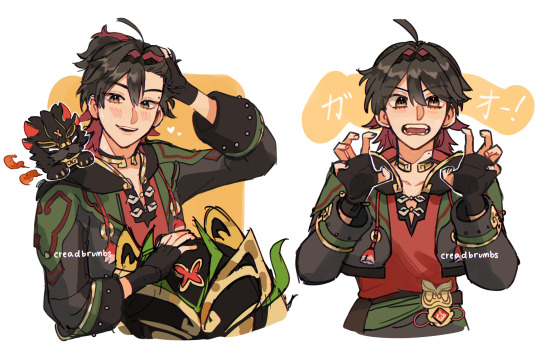
Name(s): Cyno
Age(s): 22
Pronouns: he/him, it/its
Gender(s): intersex male
Orientation(s): gay
TransID(s): transgod, transegyptian, transwarrior, transmonster, transharmed, transharmful, permadogboy, transanubis, transgeneral
Source(s): Genshin Impact
Paras: having power/authority
Emoji signoff: ⚔️💜
Positive trigger(s): egyptian mythology
Role(s): fictive, emotional protector, absorber, monarch
Faceclaim:
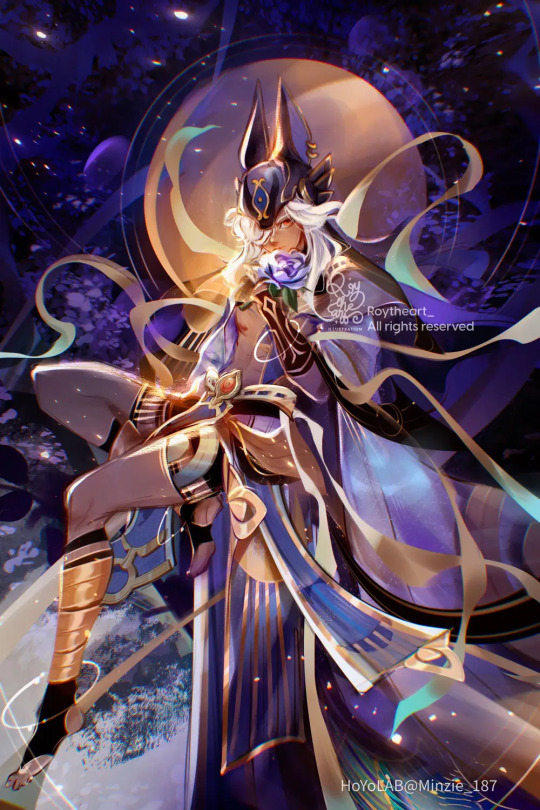
Name(s): Dori, Dorin, Sange (pronounced sahn-gay)
Age(s): chrono 202, trans 20
Pronouns: he/him, she/her
Gender(s): genderfluid
Orientation(s): panromantic demi-asexual
TransID(s): transgender, transscamartist, transtrader, transmerchant, transegyptian, transdarkskin, transgod, ichoramian, transage, permashort
Source(s): Genshin Impact
Paras: timophilia
Emoji signoff: ⚔️💰
Positive trigger(s): money, wearing sunglasses
Role(s): fictive, companion, distractor
Faceclaim:
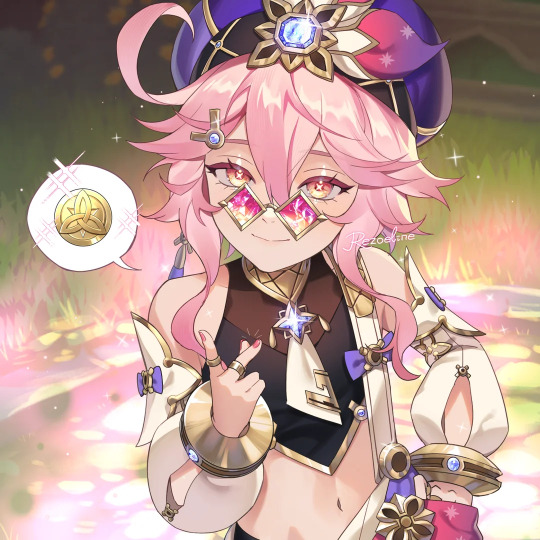
Name(s): Rosaria, Thorn, Rose, Sister Rose
Age(s): 30
Pronouns: she/her, they/them
Gender(s): cisfemale
Orientation(s): straight, hypersexual
TransID(s): rosescentic, pinkbloodic, transnun, transfaith, transreligious, transnonconforming, transgendernonconforming, permadevout
Source(s): Genshin Impact
Paras: hybriphilia, serviphilia
Emoji signoff: ⚔️🌹
Positive trigger(s): churches, prayer, rose bushes (red and/or black)
Role(s): fictive, religion holder, trauma holder, religious protector, sexual protector
Faceclaim:
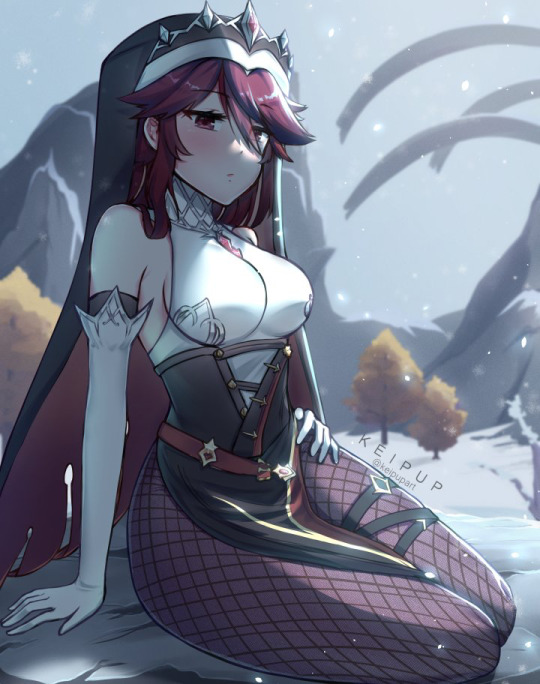
Name(s): Alhaitham, Haitham, Haith, Alhai
Age(s): 32-33
Pronouns: he/him
Gender(s): cismale
Orientation(s): gay
TransID(s): transbusinessman, transprofessional, transscribe, transacademic, transdarkacademiaaesthetic
Source(s): Genshin Impact
Paras: none
Emoji signoff: ⚔️🌱
Positive trigger(s): note taking
Role(s): fictive, academic, grief holder, subsystem co-host, homework helper
Faceclaim:

Name(s): Layla, Star
Age(s): ageless
Pronouns: she/her, they/them, star/stars, moon/moons
Gender(s): stargender, intersex, transfem
Orientation(s): panromantic asexual
TransID(s): transgender, transgoddess, permatired, permaeyebags, transhalfasleep, transhalfawake, transstudent, transastrologist, permasleepdeprived, transsleepwalker, transinsomnia
Source(s): Genshin Impact
Paras: somnophilia, autobiastophilia
Emoji signoff: ⚔️💤
Positive trigger(s): staying up late (past 2-3am)
Role(s): fictive, insomnia holder, nightmare holder
Faceclaim:

Name(s): Kuki, Mend
Age(s): ambiguous, ageless
Pronouns: they/them
Gender(s): agender
Orientation(s): aroace, doesn’t have time for relationships
TransID(s): transhealer, transgangaffiliate, transshinobu, transninja, transleader, transdeputy, transsidekick, transprofessional, transdelinquent, fictionkin (Gin - BSD)
Source(s): Genshin Impact
Paras: hybristophilia, somnophilia
Emoji signoff: ⚔️🩹
Positive trigger(s): helping people
Role(s): fictive, migraine holder, medical host, pain supressor
Faceclaim:
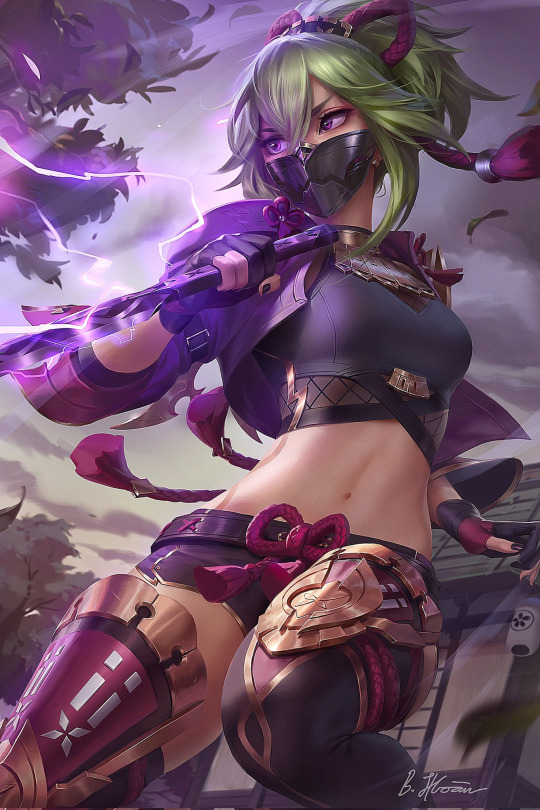
Name(s): Tighnari, Ti, Watcher
Age(s): 26
Pronouns: he/him, they/them, she/her
Gender(s): bigender, genderfaun
Orientation(s): unsure
TransID(s): transgender, permafemboy, transforestranger, transgraduate, transwatcher, permastern, transnononsense, transofficer, transsolitary, permaforestdweller
Source(s): Genshin Impact
Paras: dendrophilia, pyrophilia, teratophilia
Emoji signoff: ⚔️🌿
Positive trigger(s): nature walks
Role(s): fictive, sadness holder, trauma holder, soother
Faceclaim:
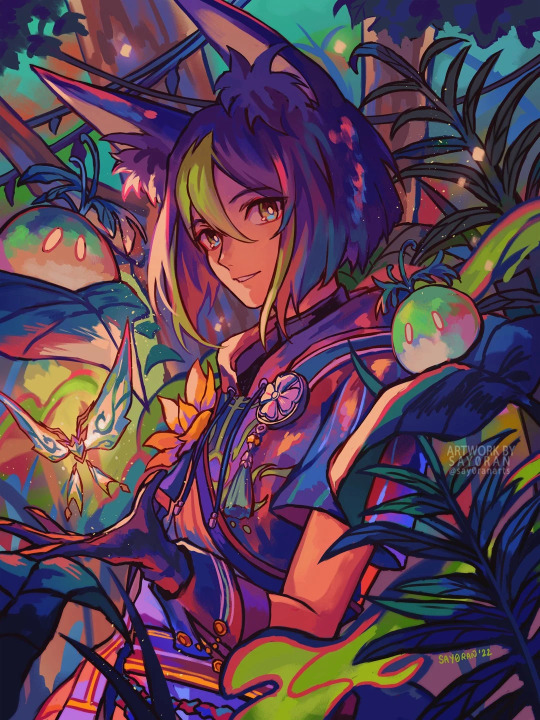
Name(s): Ororon, Shadow
Age(s): 22-28
Pronouns: he/him
Gender(s): intersex male
Orientation(s): aromantic heteroflexible
TransID(s): transvampire, transfangs, transdemon, transfatui, transdemon, permaweird, transincomplete, transsoulless
Source(s): Genshin Impact
Paras: nyctophilia, teratophilia
Emoji signoff: ⚔️🍷
Positive trigger(s): vampires, gardens
Role(s): fictive, socializer, spite holder
Faceclaim:

Name(s): Ayato
Age(s): 25-26
Pronouns: he/him
Gender(s): cismale
Orientation(s): bi (male pref)
TransID(s): transbobaaddict, transolderbrother, transspirit, transdragon
Source(s): Genshin Impact
Paras: consang
Emoji signoff: ⚔️🧋
Positive trigger(s): Ayaka, boba, rainy days
Role(s): fictive, gatekeeper, ableism protector, social alter
Faceclaim:
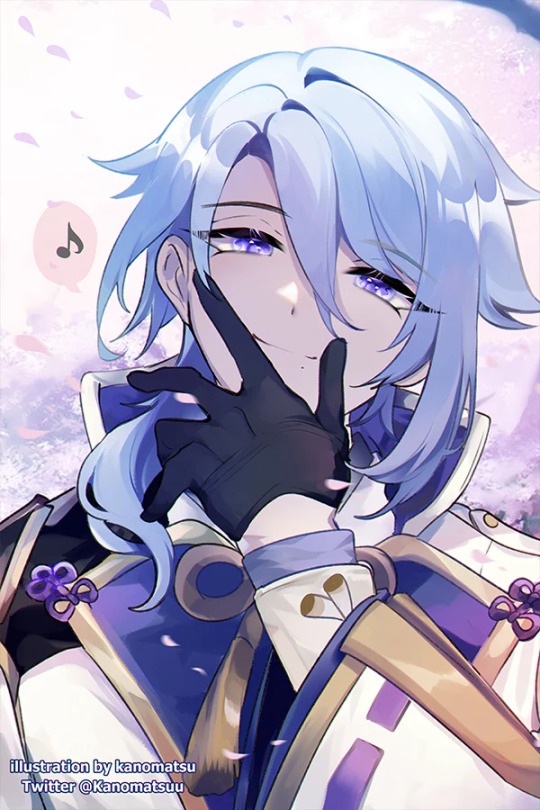
Name(s): Ayaka, Heron, Frost
Age(s): 16-17
Pronouns: she/her
Gender(s): cisfemale
Orientation(s): bi (male pref)
TransID(s): translittlesister, transspirit, transdragon, transbird, transnobility
Source(s): Genshin Impact
Paras: consang
Emoji signoff: ⚔️👑
Positive trigger(s): Ayato, large birds
Role(s): fictive, middle, trauma holder, academic, monarch
Faceclaim:

Name(s): Kazuha, Kaedehara, Kaede/Kade
Age(s): 18-20
Pronouns: he/him
Gender(s): trans male
Orientation(s): open to anything
TransID(s): transgender, transreigon, transera, transsamurai, transwanderer, transadventurer, transrunaway, permachill, transtrackrunner
Source(s): Genshin Impact
Paras: cheirophilia, podophilia
Emoji signoff: ⚔️💨
Positive trigger(s): windy days, samurai
Role(s): fictive, soother, anxiety overrider, apathy holder
Faceclaim:

Name(s): Mualani, Lani
Age(s): 17-19
Pronouns: she/her, surf/surfs, wave/waves, shark/sharks
Gender(s): cisfemale
Orientation(s): pan, hypersexual
TransID(s): transislander, transtransgender, transsharkwhisperer, transOLD, transADHD (hyperactive)
Source(s): Genshin Impact
Paras: hybristophilia, zoophilia (aquatic animals)
Emoji signoff: ⚔️🦈
Positive trigger(s): sharks, surfing, crashing waves
Role(s): fictive, social alter, online social alter, ADHD holder, sexual protector
Faceclaim:

Name(s): Hu Tao, Ghosty/Ghost, Haunt
Age(s): chrono 542, trans 15-18
Pronouns: he/him
Gender(s): trans male
Orientation(s): aromantic gay
TransID(s): transage, transgender, transghost, transspirit, transmonster, transmedium
Source(s): Genshin Impact
Paras: spectrophilia
Emoji signoff: ⚔️👻
Positive trigger(s): graveyards, halloween
Role(s): fictive, anxiety holder, corrupter
Faceclaim:
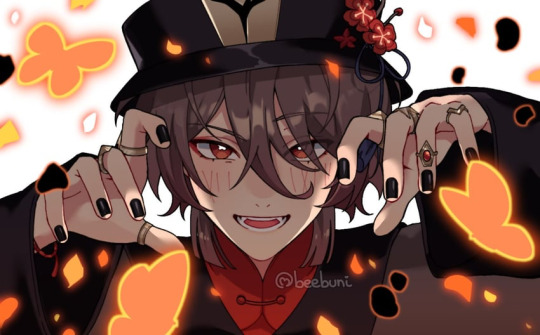
Name(s): Ganyu
Age(s): chrono 3674, trans 20
Pronouns: they/them, she/her
Gender(s): female
Orientation(s): aromantic demi-bisexual
TransID(s): transdragon, transpowers, transsecretary, transmonster, transhorns, transchinese, transpeaceful
Source(s): Genshin Impact
Paras: pyrophilia
Emoji signoff: ⚔️❄️
Positive trigger(s): snow, dragons
Role(s): fictive, caretaker, designated driver, protector
Faceclaim:
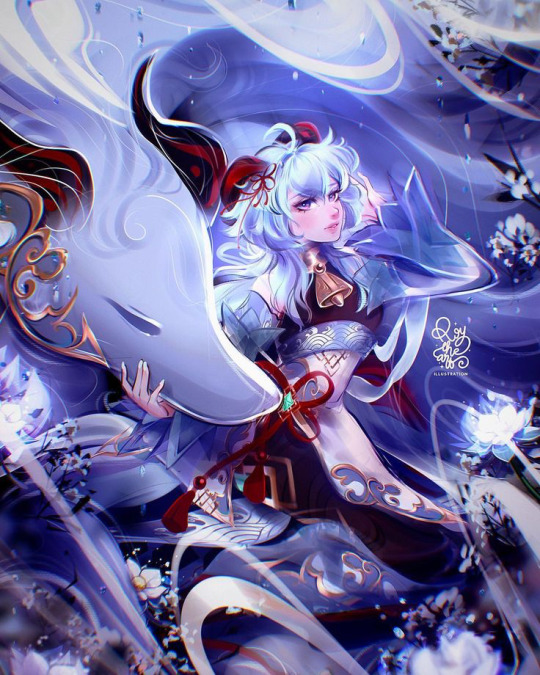
Name(s): Razor
Age(s): 14
Pronouns: it/its, he/him, thing/things, paw/paws
Gender(s): cismale
Orientation(s): aroace
TransID(s): transdogboy, transanimal, transmonster, transadopted, transESL, therian (wolf), permagrowling, transrestingbitchface
Source(s): Genshin Impact
Paras: zoophilia
Emoji signoff: ⚔️🐾
Positive trigger(s): wolves, barking
Role(s): fictive, intrusive thoughts holder, defender, protector, prosecutor, rage holder, sadness holder
Faceclaim:
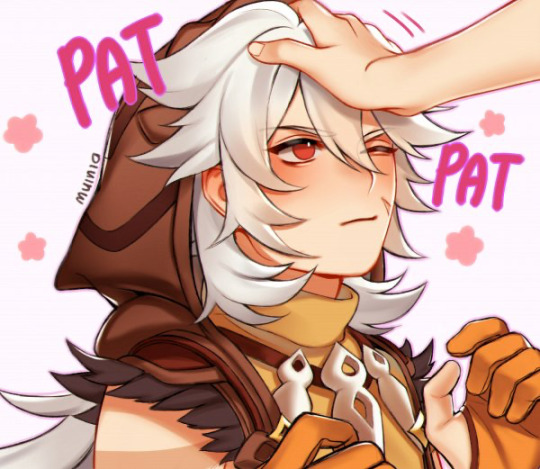
Name(s): Neuvillette, Ori, Neuvi
Age(s): chrono 1,462, trans 32
Pronouns: he/him, they/them
Gender(s): genderfaun
Orientation(s): gay (says straight)
TransID(s): transjudge, transage, transdragon, transpowers, transwings, transhorns, transancient, trandera
Source(s): Genshin Impact
Paras: mortals
Emoji signoff: ⚔️🪶
Positive trigger(s): Wriothesley/Rio/Ryze, organizing, waterfalls, otters
Role(s): fictive, subsystem host, worker
Faceclaim:

Name(s): Wriothesley (pronounced ryze-lee), Rio, Ryze
Age(s): 39-40
Pronouns: he/him
Gender(s): ambiguous male
Orientation(s): biromantic gay
TransID(s): translord, transdogboy, transwolfman, transpitfighter, transmurderer, transkillcount, transfostered, transadopted, transcriminal, transadministrator, transwarden, transrolemodel
Source(s): Genshin Impact
Paras: violentsexual, sadomasochism
Emoji signoff: ⚔️👊
Positive trigger(s): people/animals in/from adoption centers
Role(s): fictive, adopter, little supervisor/caretaker
Faceclaim:
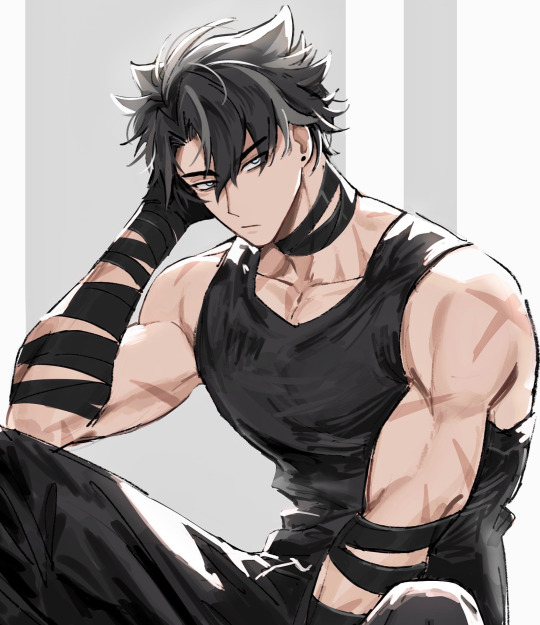
Name(s): Keqing, Keqqi (pronounced catchy)
Age(s): 18-22
Pronouns: she/her, mew/mews
Gender(s): trans female
Orientation(s): achillean
TransID(s): transgender, transcatgirl, transstorm, transweatherphenomenon, transharmed
Source(s): Genshin Impact
Paras: storms
Emoji signoff: ⚔️⚡️
Positive trigger(s): cats, lightning
Role(s): fictive, trauma holder
Faceclaim:

Name(s): Kaveh
Age(s): 27
Pronouns: he/him
Gender(s): cismale
Orientation(s): heteroromantic bisexual
TransID(s): permaarchitect, transautistic, transADHD (inatentive)
Source(s): Genshin Impact
Paras: none
Emoji signoff: ⚔️💼
Positive trigger(s): victorian architecture, any building style he’s fixated on
Role(s): fictive, architect, subsystem co-host, social alter, protector
Faceclaim:
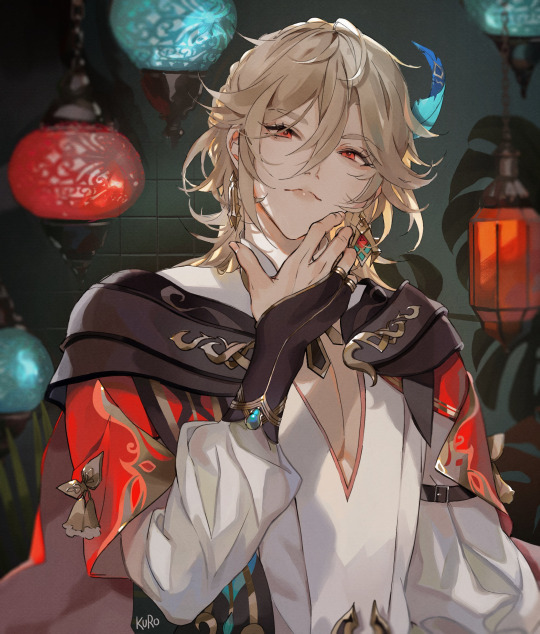
#build a headmate#build an alter#headmate creation#alter packs#headmate pack#pro transid#pro rq 🌈🍓#transplural#rq 🌈🍓#pro transplural#transid#transx#fictive#subsystem
27 notes
·
View notes
Text

Akira Toriyama (Japanese: 鳥山 明) (1955-2024) Chrono Trigger - Akira Toriyama Exhibition Limited Edition Lithograph Print (1995) Source
RIP Akira Toriyama
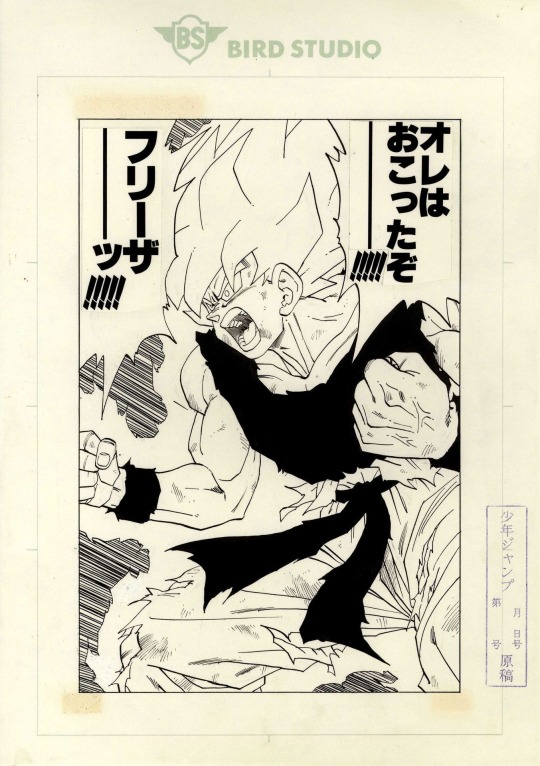
58 notes
·
View notes
Note
hullo! we'd love it if you could do a lvl 3 fictive of any source you like who's job in the system is to help us learn to drive and study for getting a driver's licence! so someone good under pressure and very focused as well. maybe if it's not too much trouble a lot of TransIDs as well — we may send this type of request to multiple blogs so we can see multiple results jsyk!!
𝜗𝜚 PACK # 009 – kyoko kirigiri fictive

zure !! we thought about who the fictive would be of for a while , but when i zaw danganronpa in your zourcelizt and read the wordz " zomeone good under prezzure and focuzed " i immediately thought of kyoko , zo ... here you go !!!
alzo we ' re zo zorry for the time it took uz to make thiz requezt ( and all the otherz ofc ) 😭😭 i hope i finizhed the alter pack in time / gen

name ( s ) : kyoko , amethyst , violette , adelia , nancy , calypso , lilith , cordellia , sage , bianca , fuyuko , mistie , kiri , raine , ophelia , raven , artemis
pronouns : they / them , she / her , it / its , hy / hym , ae / aem , ze / zyr , xy / xyr , ve / vyr , ix / ixs , mys / tery , violet / violets , void / voids , mist / mists , fog / fogs , lily / lilys , snow / snows , 🤍 / 🤍s , 💜 / 💜s , ☁️ / ☁️s , 🎼 / 🎼s
age : 21 - 27 ( chrono age – 23 )
gender ( s ) : intersex , agender , mysterygender , detectivegender / detectivic , voidgender , mistgender , radqueergender
orientation ( s ) : biromantic , aroace
cisIDs : AFAB , OCD , japanese
transIDs : species , age , intersex , amnesia , autism , ADHD , maladaptive daydreaming , anxiety , anorexia , mobility aid user , necrophile , somnophile , ( demo ) MAP , radqueer , xenosatanist
trisIDs : harmed , kodocon
permaIDs : eyebags , studying
paraphilias : necrophilia ( dead bodies ) , somnophilia ( sleeping individuals ) , ped0philia ( minors ) , kodocon ( fictional underage characters )
role ( s ) : academic , worker , assidumate , task - doer , apathy holder , protector
source ( s ) : kyoko kirigiri - danganronpa
personality : calm , quiet , calculated , intelligent , focused , rarely shows vyrs emotions
likes : quiet places , crystals , clouds , studying ,
dislikes : sudden noises , being stuck in traffic
hobbies / interests : journaling , reading
kintypes : black cat
aesthetic : pastel detectivecore , elegant
music taste : calm , lofi
typing quirk : proper grammar
positive triggers : having to drive / study
species : human
appearance :



signoff ( s ) : 🤍 , 💜 , ☁️ , 🎼 , 📄 , 🔎 , 🖋 , 📎 , ⛓️

#🐛 ) mod bug . . .#☁️ ) - our packs . . .#🌬 ) request . . .#bah blog#bah#baa#create an alter#alter packs#build an alter#build a headmate#headmate pack#create a headmate#headmate creation#rq 🍓🌈#rq community#rqc🌈🍓#rq 🌈🍓#rq safe#pro rq 🌈🍓#radqueer 🍓🌈#rqc 🍓🌈#🍓🌈 safe#plural community#plural system#plurality#endo safe#endogenic safe#pro endo#endo friendly#willogenic
8 notes
·
View notes
Text
BAH Blog [>_<]> Part 1 / Request Form. /[/May have errors_or wait time issues/]/.
Media: Any but preferably CKR, Creepypasta/Urban legend, or anything else [might take time to look into the source and analysis it].
Provided template:
□ Phobia's/Triggers [Source or not]
■ Paraphilia's [Optional]
□ Age -> Chrono/Trans/Bio [?]
■ TransIDs/CisIDs [+MI's / Dissociation responses] <- [Tulpamancy + Willogenic systems in mind.]
□ Names / Tags or symbols
■ Pronouns [Neo/Xeno/Neuro]
□ Exotrauma/Source trauma or acquired trauma ×<Freeze>× ×<Flight>× ×<Fight>×
■ MUDs [Regardless of PDs -> Custom MUDs based on sources are possible of requested.]
□ Stances [Blankqueers, Opinions/General -> can be changed after or at any point to fit your systems needs.]
■ Sexuality [Not required though if you deem your uncomfortable with it] -> Multisexual/romantic labels included [Biromantic Lesbian for example.].
□ Gender [+! Xeno/Neo/Neuro/Trans]
#transid#pro radqueer#radq interact#radq safe#pro radq#radqueer 🌈🍓#radqueer#build a headmate#build an alter#build a system#build a subsystem#willogenic safe#pro willogenic#willowgenic#willogenic#pro endogenic#pro endo#radqueers please interact#rq 🍓🌈#rqc🌈🍓#rq please interact#pro rq 🍓🌈
8 notes
·
View notes
Note
Haiii can we have a songtive for XOXO (Kisses Hugs) by 6aerlyhuman pleaseee? - someone from 🎀🧸 anons sys :3
This one was fun. The song has such an distinct vibe, it was an interesting task to put it into an alter.

Name/s: Seth, Ellis, Ryker, Hollix
Age: perma19
Pronouns: it/they/he/scene/rave/fuck/kiss/glow/neon/cringe/🌈/✨/🪩
Source: XOXO (Kisses Hugs) (6arelyhuman)
Genders: scenegender cringeboy
Sexuality: homoflexible
CisIDs: black hair, green eyes, AFAB, scenemo, furry, raver, low empathy, hyper verbal, SH addict, drug addict, alcoholic, smoker, stoner
Mental/physical conditions: ADHD, HPD, BPD, schizophrenia
Other labels: bat/wolf therian, hypersexual, polyamorous
Faceclaim: @/milkology on picrew

Alter roles: mood booster (by questionable means)
Front triggers: rave/scene music, illicit substances, parties/clubs, hair dye
Signoffs: -💋, -💊, -💫
TransIDs: transMasculine, transIntersex, transWasian, transKorean, transBlueHair, transX3Face, transStaticVoice, transHomewrecker, transGamblingAddict, transMissingPerson, transAbused, transStalked, permaHigh, permaSceneMakeup, permaCringe, permaRave
Paras: autonarkobiasto-, magna-, nycto-
Personality: impulsive, flighty, thrill-seeking, fun, reckless, impatient, flippant, self-indulgent
Quirks: REFUSES to state its chrono age. Massive social butterfly
#pro radq#radq safe#pro rq 🌈🍓#radqueer#rq 🌈🍓#radq#radq interact#radqueer 🌈🍓#🌈🍓#build a headmate#build an alter#s: 6arelyhuman#c: xoxo (kisses hugs)#sprout ; 🌱#palm ; 🌴#mod dee🌒
7 notes
·
View notes
Note
Annon-Guy: Related to the Deleted Scene Ask.
Care to sate the theory part of you my friend? Any thoughts?
https://www.tumblr.com/annon-guy2/777321015597465600/xblaze-code-embryo-scrapped-cgs-and-storyboards?source=share
Having seen more of Lost Memories than Code Embryo, I can confirm that those images would later be used in Lost Memories.
LM is a retelling of events in CE, but the retelling basically removes most of the fluff alternate ending and what if scenarios CE had that were ambiguous about what happened.
If they were ripped from CE though, that mostly confirms they were intended to be used but for some reason got shelved, only to be used later.
Spoilers
Es falls in the Boundary along with Hinata, which triggers Hinata’s true state and she resets events similar to Amaterasu’s intervention, only, she used Es to do this and Es became Nobody.
This was all to protect Touya, essentially, but it removed his memory of ever meeting Es, and all he remembered was the sword Es once used which Mei entrusted to him.
Nameless makes contact with Nobody years later and uses her powers to grant Nobody’s wish, which resets a facet of the timeline again, only this uses up most of Es’s power except for one aspect of it.
Neither Es nor Touya remember much of what happened, but Es is determined to protect Touya in this timeline, and uses the last of her power to do so.
Their ending is somewhat ambiguous in connection with Dark War, but it’s still implied that at some point Es was chosen as the Arbiter, but after she completed her task she returned to live with Touya in her original timeline. Based on what happened in Dark War though, the events of Lost Memories removed Dark War from the Timeline, which resulted in Central Fiction, though some characters from Dark War still exist after Central Fiction.
You could argue that CE’s timeline lead to Dark War, but Dark War was altered by Chrono Phantasma, which in turn resulted in Lost Memories which lead to Central Fiction.
Hinata might be one aspect of the Origin, or not, but at the least it is clear Es got her happy ending after Lost Memories.
7 notes
·
View notes
Text
A look at the 16-bit Revelry garments

This garment line is inspaird by 16 bit games.
But first let's look at what doas 16 bit is. 16 bit equals two bytes. 16 bits as a system allowed a bigger amount of data to be stored and processed, then the previous 8 bits. The 16 bit system can theoretically have up to 64 kilobytes (2^16 bytes) of memory.
Also there is also "16 bit color", which usually refers to the color depth or the number of colors that can be displayed by a computer or graphics system.
Here are a few popular 16 bit games: Chrono Trigger, The Legend of Zelda: A Link to the Past, Super Mario World, and Undertale.
Okey. So. I might be wrong in some cases. If I'm wrong, or didn't got a refrenc then please feel free to corect me.
Spathofea - Onwards, To Victory!


This skin is a Mega man refrenc. Simple as that.
2. 6 - Time and Location

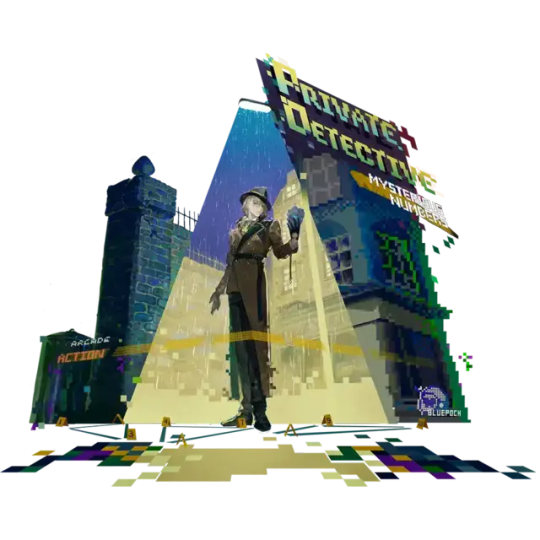
Okey. I don't know if he is a refrenc to a specific game. He may be a refrenc to a specific NPC. Eather way he looks like hw would give you a quest.
3. Kanjira - The Night Visit
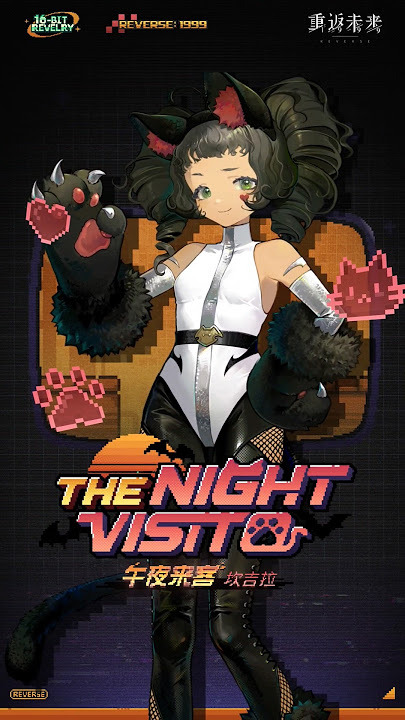

So I don't know this one eather. I think it could posably be a Tokyo mew mew refrence maybe? Agein, if you know feel free to write it.
4. Sputnik - Eek, Eek!
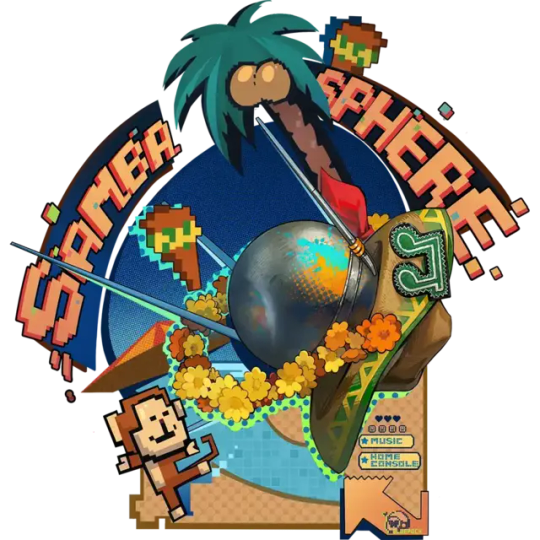

I don't know this one eather. Eather. I'm glad she got a skin.
Sources: - Lenovo
12 notes
·
View notes
Note
Hi hiii! Can I please request a Jason Todd that has a Galaxy Frappe with Lemonade, rainbow sprinkles, and Cinnamon?? Can one of his roles also be a reducer as well?? Please and thank u
Jason Todd Headmate Pack



Names 𓂃⋆.˚ Jason, Todd, Smoke, Ash/Ashe, Red, Robin, Bex
Nicknames 𓂃⋆.˚ Jay
Age 𓂃⋆.˚ Chrono 26
Pronouns 𓂃⋆.˚ he/him, red/reds, hood/hoods, scar/scars, stitch/stitches, heart/hearts, grip/grips, ring/rings
Source 𓂃⋆.˚ Batman
Genders 𓂃⋆.˚ Trans man, Horrorboy, Fleshripped
Sexuality 𓂃⋆.˚ Gay
Alter Roles𓂃⋆.˚ Reducer, Artisan, Replacer
Front Triggers 𓂃⋆.˚ His source, gr00ming
Signoffs 𓂃⋆.˚ -🦇🍟❤️, -🦇, -🍟, -❤️
Songs 𓂃⋆.˚ Losing my grip - Johnnie Guilbert, Be nice to me - The front bottoms, Poison - Johnnie Guilbert
Aesthetic 𓂃⋆.˚



Personality𓂃⋆.˚ Strong, a little blunt, sarcastic, not very talkative, traumatized.
Quirks 𓂃⋆.˚ Fidgets with scars hands a lot (cracking knuckles, stretching hands, etc)
Location Pref 𓂃⋆.˚ at home
Paras 𓂃⋆.˚ 🍭, 💥, 💧
Mental Conditions 𓂃⋆.˚ BPD
CisIds 𓂃⋆.˚ BPD, Harmed, Multi-coloured hair, gr00med
TransIds 𓂃⋆.˚ TransAlternative (type 1), YoungerFluid, TransLifePath, TransMemory, TransForced, TransForcedAddiction (weed)
MiscIds 𓂃⋆.˚ Trisvictim, Permascars, PermaEyeBags, PermaGroomed
Likes 𓂃⋆.˚ the colour red, being alone
Dislikes 𓂃⋆.˚ being lonely

#🌌constellation;#build a headmate#build a headspace#alter pack#build an alter#create a headmate#alter packs#bah#headmate pack#bah blog
8 notes
·
View notes
Text
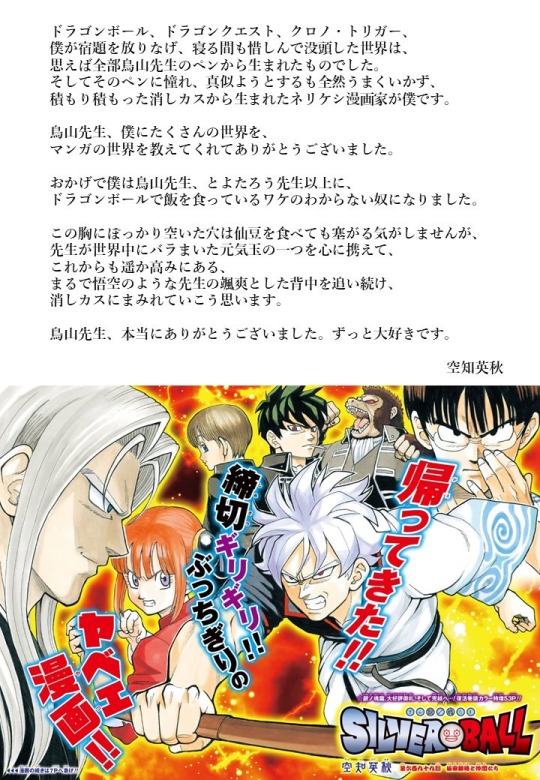
Source
“Dragon Ball, Dragon Quest, Chrono Trigger, the worlds in which I threw away my homework and spent every spare moment I had to sleep were all born from the pen of Mr. Toriyama. I was born from the eraser shavings that piled up after I admired his pen and tried to imitate him, but I never succeeded. Thank you Toriyama-sensei for teaching me so much about the world of manga. Thanks to you, l've become a man who makes his living from Dragon Ball, even more than Mr. Toriyama and Mr. TOYOTARO. I don't think I can fill this gaping hole in my chest even if I eat some dried beans, but I will continue to follow his dashing back, like Goku, from a great height, covered with eraser dust, carrying one of the Genki-dama that he scattered all over the world in my heart. Thank you so much, Toriyama-sensei. I will always love you.” - Hideaki Sorachi
Translation source
Too early to be crying again but hey
47 notes
·
View notes